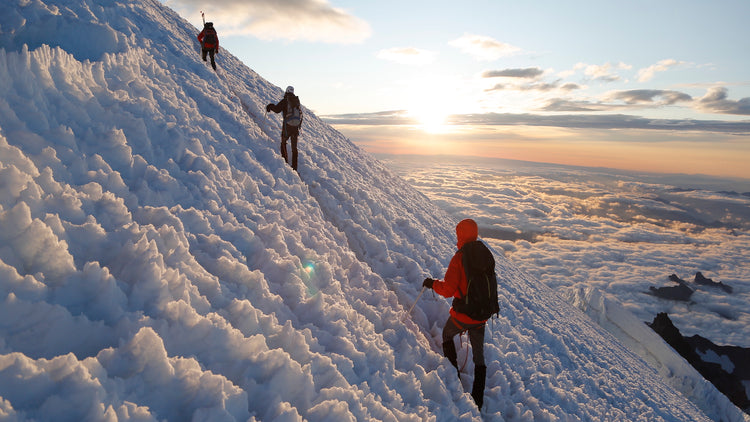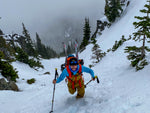This post is a repurposed version of a post at our sister company, RMI Expeditions. Find it here.
Introduction
This is part 1 of a 2 part series: for the Mountaineering Training Program itself, click here.
Fitness for mountaineering requires a high overall level of physical conditioning. Both cardiovascular and motor fitness are needed to climb at varying levels of intensity and to navigate challenging terrain, often while carrying a loaded pack and at high altitudes.
The greater your level of fitness, the more efficiently you can acclimate (i.e., adjust) to altitude. Simply stated, fit climbers spend less energy on certain tasks (i.e., a day of hard climbing), leaving their bodies ready for the task of acclimatization.
Training for mountaineering focuses on building an endurance athlete by developing cardiovascular fitness (fitness of the heart and lungs) and motor fitness (particularly endurance, strength, and balance), using specific goals and following a defined timeline.
Cardiovascular Fitness
Cardiovascular Fitness is measured through your aerobic capacity: your body’s ability to take in and use oxygen. Cardiovascular training is directed at conditioning your heart and lungs to deliver oxygen to your muscles.
Motor Fitness
Motor Fitness refers to endurance, strength, power, balance, agility, and flexibility. These are all important factors in your ability to climb smoothly and efficiently on mountainous terrain.
Goal Setting
Training goals are critically important given the time constraints placed by weather, route conditions, objective hazards, and the effects of altitude. Proper physical conditioning allows you to perform better by climbing longer, stronger and faster, be more comfortable on steeper and awkward terrain, carry heavier loads, recover more quickly at rest, and better enjoy the entire adventure.
Set your goals at the beginning of your training program. Begin by asking these questions:
What is the fitness level needed on the climb?
- How many days does the climb require?
- What type of terrain and climbing will you encounter?
- To what altitudes will you climb?
- How heavy will your pack be?
What is my current fitness?
- What are your current cardiovascular strengths and weaknesses?
- What are your current motor fitness strengths and weaknesses?
What is my time frame?
- How long do you have to improve your fitness before the start of the climb?
Building Your Plan
Once you have examined the physical requirements of the climb, your current fitness levels, and your training goals, establish a timeline for your training program. Divide your timeline into three roughly equal phases in order to focus your training.
Phase 1: Building Base Fitness
Your training should incorporate both cardiovascular fitness and motor fitness training from the start and build your "fitness base" as you get into a routine and your body adjusts to these workouts.
Phase 2: Introduce Mountaineering Specific Training
Begin making your workouts more mountaineering specific with hikes and climbs and occasional interval sessions aimed at broadening your range of comfort at various effort levels.
Phase 3: Tailor Training Specifically for the Climb Ahead
Train on terrain similar in steepness and difficulty to the mountain and with a pack mimicking what you will be carrying.
After establishing your training timeline, plan out your training schedule. Your training schedule should incorporate both cardiovascular and motor fitness training from the outset, but start carefully to avoid overuse or over-enthusiasm injuries. Use a variety of exercises, activities, locations, etc. to keep physically challenged and mentally engaged.
Aim for interval and strength training once every 3 days. Aerobic, balance, stretching, and abdominal exercises can be done every day. Stretching should be completed after every workout. Over time incorporate endurance training into all activities.

Click here to see recommendations on your workouts for your training program.








